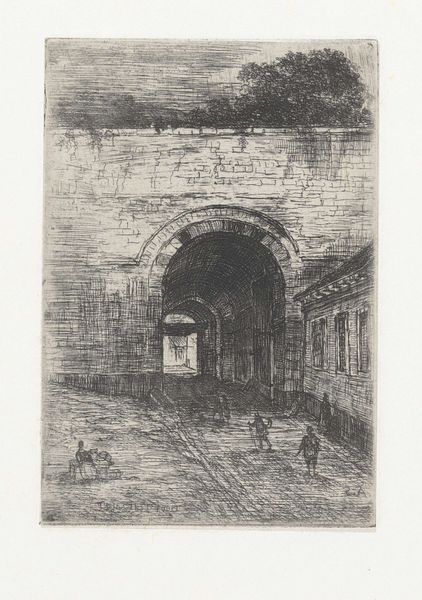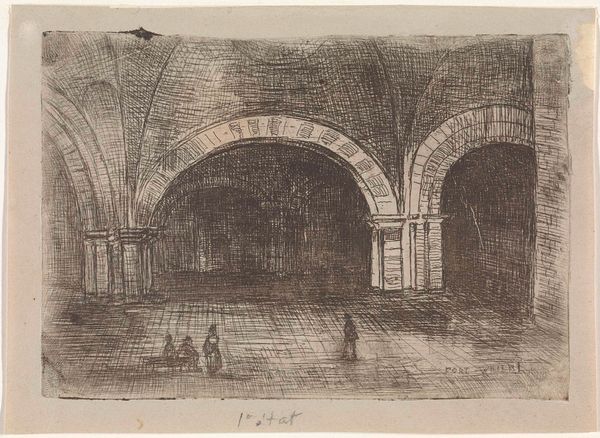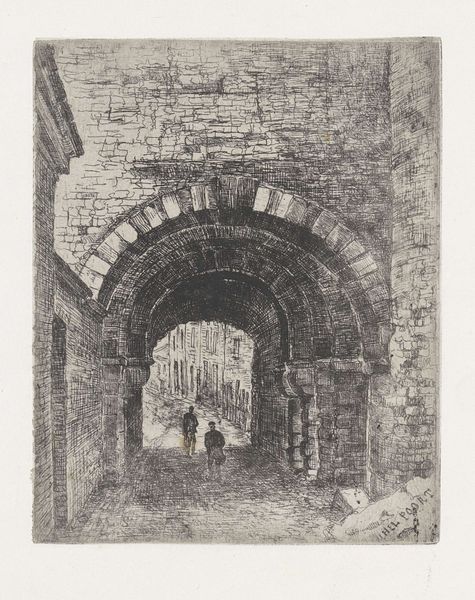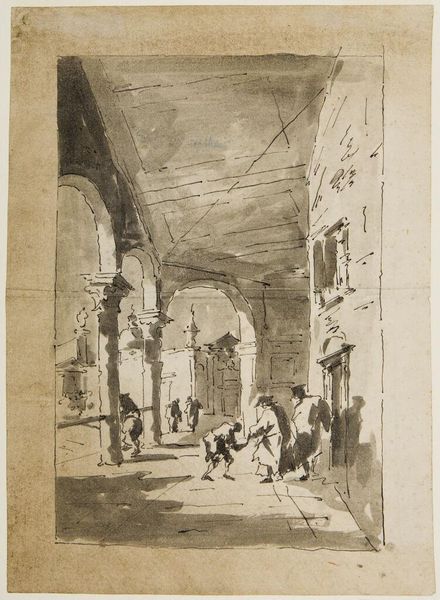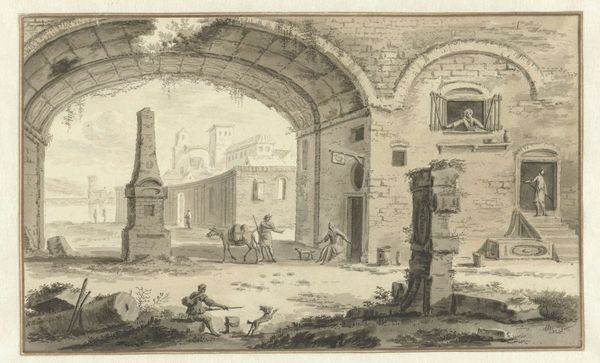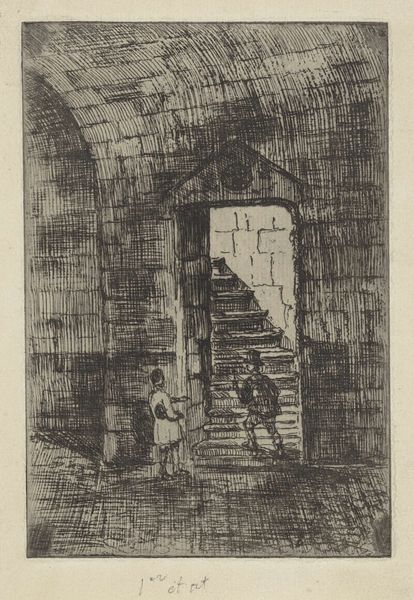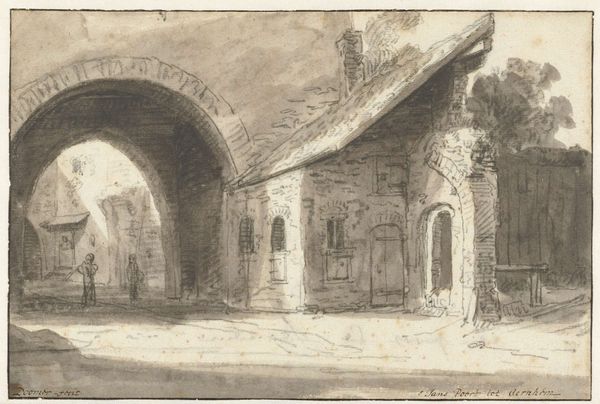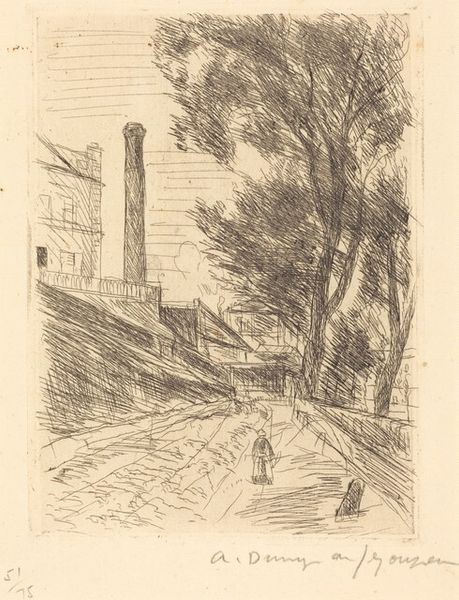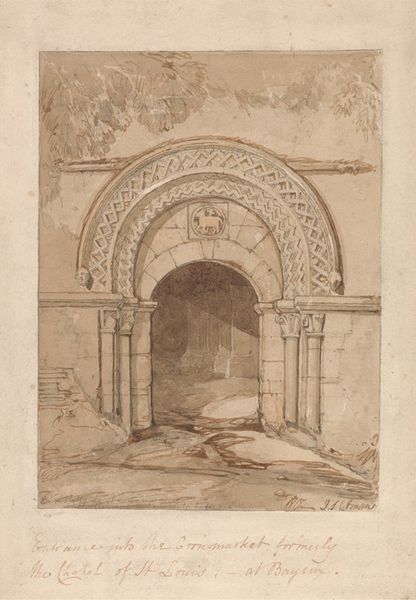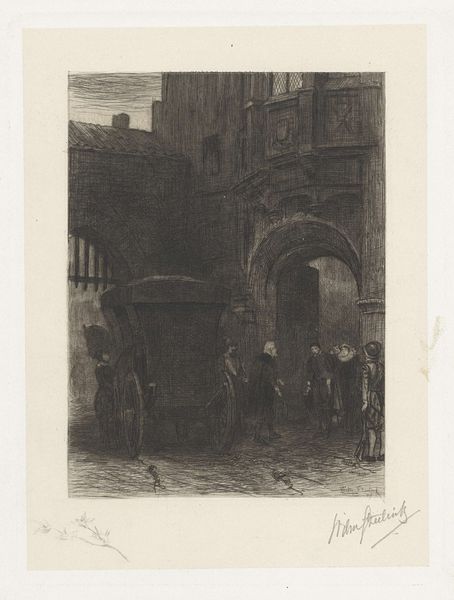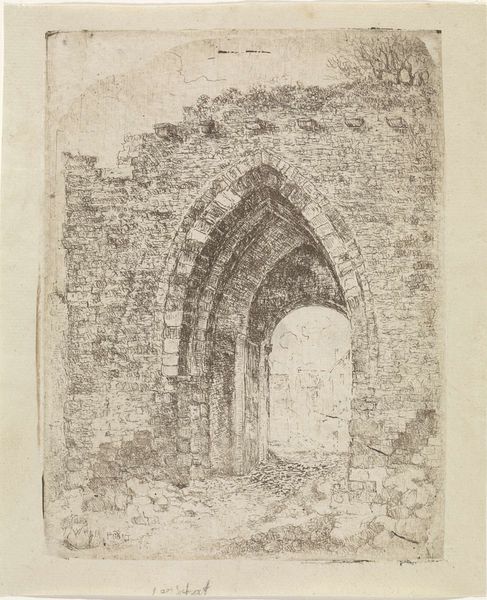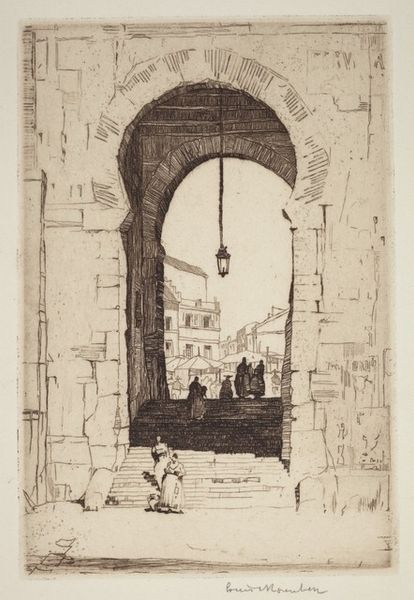
Dimensions: height 184 mm, width 142 mm
Copyright: Rijks Museum: Open Domain
Curator: Here we have Alexander Schaepkens’ "Tongerse poort te Maastricht," an etching and print dating from the 19th century, currently held at the Rijksmuseum. Editor: Immediately, I’m struck by the almost melancholic mood, wouldn't you say? The intricate, detailed lines create a strong sense of depth and perspective. It feels both real and slightly dreamlike. Curator: The choice to depict this gate, once integral to the city's defense, brings forward interesting issues of power and access, the separation of inside and outside. Its architecture speaks volumes, too, especially concerning class and societal structures. Editor: Definitely. And the gate itself is quite powerful. Arches often symbolize transitions, but the multiple arches create a kind of layered journey. Consider, too, the light and shadow; the archway becomes an opening to another realm, framed by solid stone that is meant to last. Curator: The etching beautifully showcases the nuances of light and shadow. But it's crucial to understand that in the context of 19th century Netherlands, a walled city could imply exclusion. The artist has chosen to focus on the gate, so, intentionally or not, the image represents barriers of societal structure. Editor: I see your point. Yet, there's also an inviting quality. Notice the figures moving towards us from the darkness. They animate the composition and offer a glimpse of daily life in Maastricht. It reminds us that even imposing structures are spaces for human experience. Curator: I suppose what complicates the narrative further is that we now view old structures with nostalgia, a stark contrast from the past where people who wanted freedom might have had conflicted feelings toward them. Even the artist’s potential nostalgia requires closer inspection when considering social hierarchies of the era. Editor: Agreed, historical context is essential. But looking closely, that deep perspective gives the piece such enduring power. Curator: Precisely, which means we can delve even deeper to truly analyze its socio-historical significance. Editor: Right, and the interplay of visual elements also evokes something timeless and universal. I think we've just barely scratched the surface here!
Comments
No comments
Be the first to comment and join the conversation on the ultimate creative platform.
